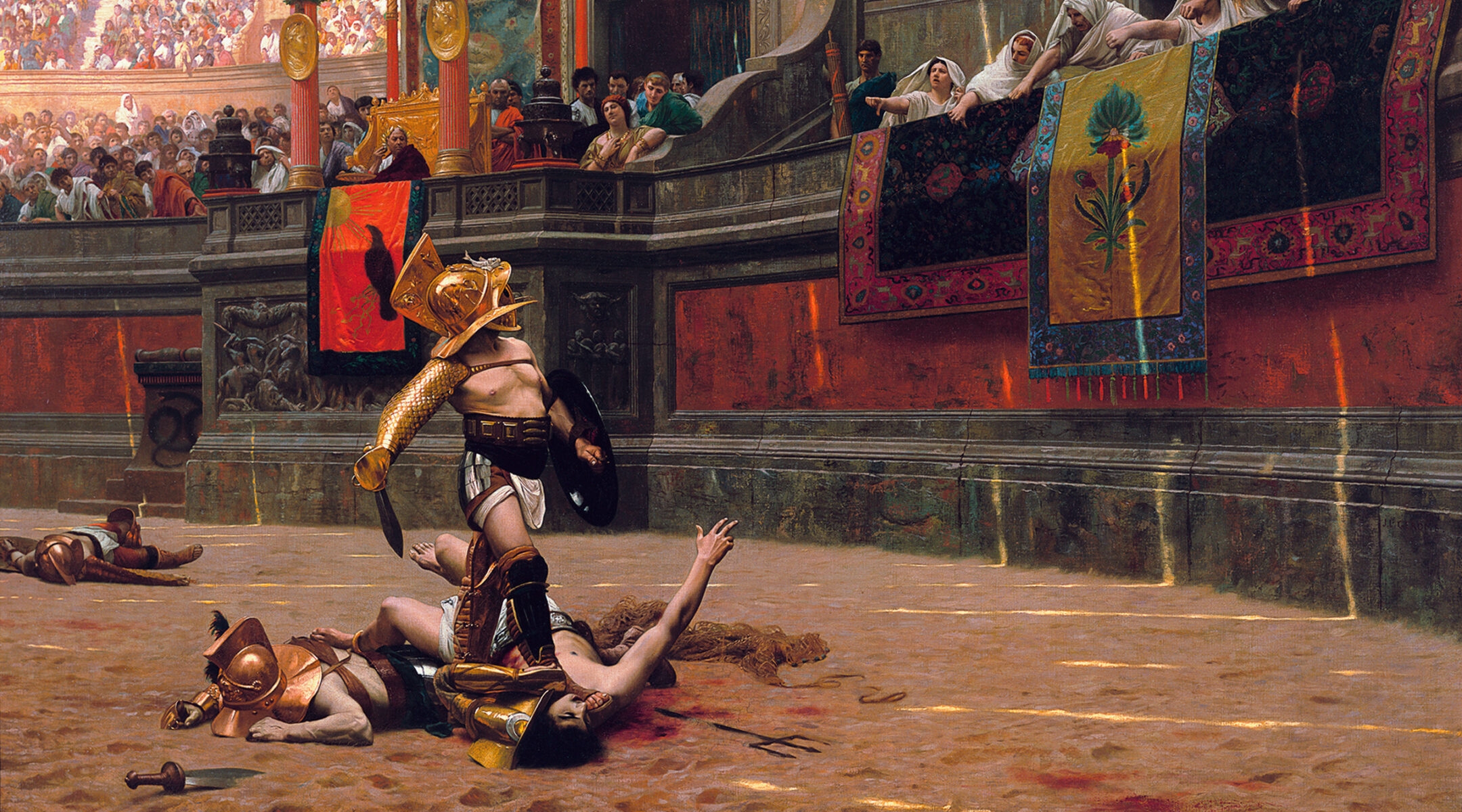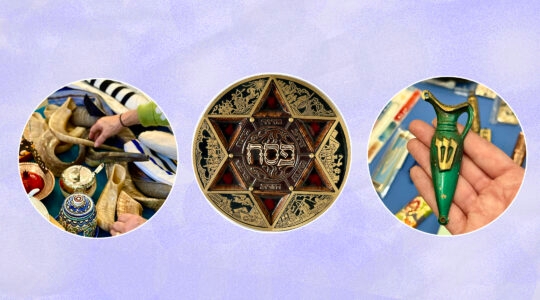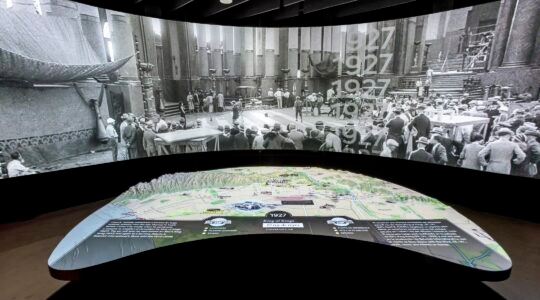In 79 CE, Mount Vesuvius erupted in southern Italy, burying the nearby Roman city of Pompeii in scalding stone and ash. The catastrophe famously entombed, and preserved, the city’s villas, workshops, and a gladiator barracks known as the Caserma dei Gladiatori.
Excavators first unearthed the barracks in the late 1700s. Among the ruins they found a bronze helmet, with a circular brim, a griffin rising from its crest, and on its forehead, a palm tree — then a symbol tied to Jews in the Roman province of Judea.
But was the helmet worn by a Jewish gladiator? Did Jewish gladiators even exist?
It’s at least as likely that Jews took to the arena in ancient Rome as it was that gladiators fought sharks, a key plot point of Ridley Scott’s “Gladiator II,” the hotly anticipated action movie that landed in theaters this weekend. A sequel to 2000’s “Gladiator,” which ended with the death of Maximus (Russell Crowe), “Gladiator II” casts no light on the possible history of Jewish gladiators; its strongest Jewish connections are the presence of Jewish actors, including Israelis Lior Raz and Yuval Gonen and former “Great British Baking Show” host Matt Lucas, in its cast. They join Kirk Douglas, who starred in 1960’s “Spartacus,” in the ranks of Jews who have portrayed gladiators on screen.
But many have occupied themselves with questions about the role of Jews in ancient Rome’s famous bloodsport, including whether fights took place in ancient Israel and what Jews thought about the activity, whether or not they participated. Here’s what the scholars and evidence have to say.
Did gladiator battles take place in ancient Israel?
Public spectacles, including games and gladiatorial battles, were a central part of Roman life. Rome’s Jewish client king of Judea, Herod the Great, built several amphitheaters to host games in the province during his reign in the 1st century BCE, according to the Jewish historian Josephus, writing around a century after Herod’s reign. Two of the amphitheaters were in the area of Jerusalem, and have not been located by archaeologists, but the third, in Caesarea, still exists.
The amphitheaters in Jerusalem hosted games including foot-races, boxing and discus throwing, according to researcher Loren Spielman, an associate professor in Judaic studies at Portland State University who has written about Jewish entertainment in the ancient world and published a book in 2020 on the subject.
Josephus said Herod’s Jerusalem events also included “live beast shows” and public executions, but gladiators are “conspicuously absent” in Josephus’ account, Spielman said in a 2012 paper. Josephus criticized the spectacles, saying they were unwelcome with the Jewish audience, “foreign to Jewish custom,” and “a glaring impiety to throw men to wild beasts.”
“The omission of armed battle between single gladiators at Herod’s games may have been a concession to the delicate sensibilities of Herod’s Jewish subjects, though it is difficult to say this with any certainty,” Spielman wrote.
Spielman said that, despite Josephus’ disgust at the violence, Jewish attitudes toward Roman entertainment was “probably more complex.” Julius Caesar gave Jewish high priest Hyrcanus II, and his sons and ambassadors, the right to sit with Roman senators at gladiator bouts and beast shows, he wrote.
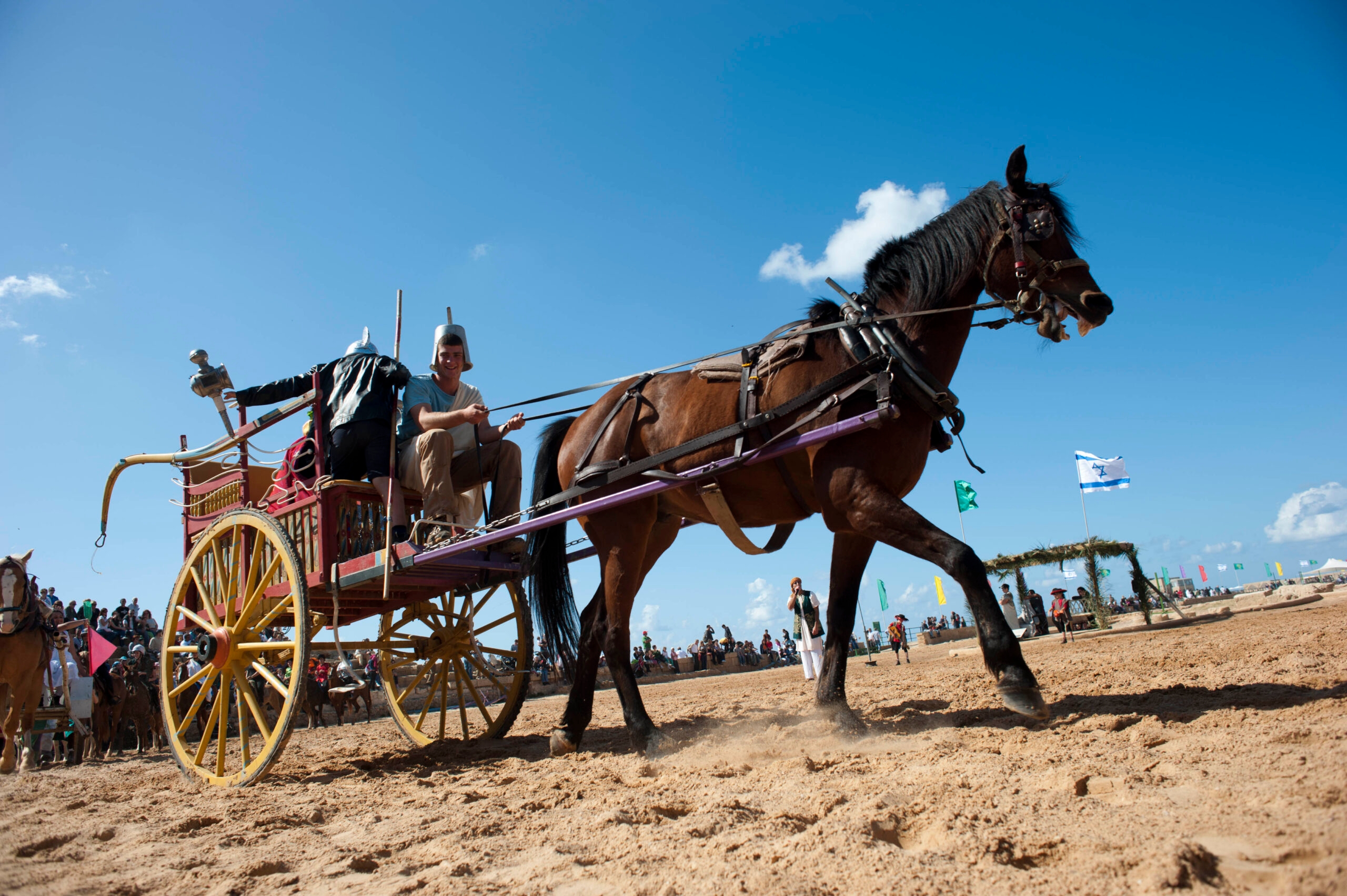
A historical reenactment takes place in the ancient Roman hippodrome in Caesarea National Park built by the king Herod, Caesarea, Israel, March 30, 2010. (Jorge Novominsky/Flash 90)
Despite the lack of evidence for gladiators in Jerusalem, in Caesarea, there were gladiator bouts, according to Lawrence Schiffman of New York University. Schiffman is a professor of Hebrew and Judaic studies focused on the Dead Sea Scrolls and Jews in the Greco-Roman world who recently finished a three-year project on Caesarea. (The area today is known for its well preserved ruins and for being the home of Israeli Prime Minister Benjamin Netanyahu.)
“It’s pretty clear from Josephus and from the archaeology” that gladiators fought in Caesarea, Schiffman said. Caesarea had a more pagan population than Jerusalem, but was still home to a sizable Jewish community, he said, adding that he doubts many Jews attend gladiatorial fights there.
“I think anyone who believes large numbers of Jews went to a game to watch people killed, as opposed to sports games where they did pagan rituals, something like that, I think it’s got to be small, and I admit to you that that’s a judgment call,” he said.
What did Jews think about gladiator bouts?
Jews had a complex and rocky relationship with ancient Rome, which went through several iterations in its rise and fall, from the early republic to its later schism between east and west. The Romans dominated Judea from 63 BCE, resulting in two Jewish rebellions. Most salient to Jews is the Roman destruction of the Second Temple in 70 CE.
Schiffman said the Jewish religious practice was generally tolerated in the empire, however, and that the rebellions were more political, related to issues like taxation, incompetent governance and insensitivity. Estimates of the Jewish population in the empire range from 4.5 to 10 million, which would have made them around 10% of the population, but the figure is disputed.
Jews likely had more compunctions about witnessing bloodshed for entertainment than their pagan neighbors due to religious morals, Schiffman said, adding that gaps between monotheistic religions and pagans were wider than gaps between different religious groups today.
“Jews valued life as something very sacred and that’s why Josephus reports that people were horrified by seeing people thrown to wild beasts for entertainment,” said Richard Hidary, a Yeshiva University professor who published a book on rabbis and the Talmud in the Roman world.
Many gladiators were not actually killed in combat due to their value as entertainers, however, potentially making the games more palatable for ancient Jews.
“If you had gladiatorial combat when no one was getting killed, you can say, ‘Why not go?” Schiffman said.

Israeli actor Lior Raz plays Viggo in Ridley Scott’s “Gladiator II.” He is pictured here with Meital Barda at the global premiere after-party in London, Nov. 13, 2024. (Kate Green/Getty Images for Paramount Pictures)
The games also featured other contests, such as chariot races. Jews likely attended these games, although their attendance was complicated by pagan rituals that took place at the arena. The rituals were looked down on by Jewish religious authorities, but that did not rule out Jewish spectators.
“For a person to go to the arena to watch chariot races when there’s going to be pagan rituals done at the beginning, he sits there and talks to his friends while it’s going on,” Schiffman said. “If Yankee stadium had prayers mentioning Jesus at the beginning of the game, of course Jews would go.”
Hidary said rabbis debated watching the games in the Jerusalem Talmud. One rabbi held that watching the games was prohibited due to idolatry because of sacrifices and pagan prayers at the beginning. Another said it was fine to attend if “you come late and skip that part,” while another held that paying for an entrance fee contributed to bloodshed, Hidary said.
Other rabbis saw benefits in attending the games. The spectacles gave the public a forum to air grievances to officials in attendance, and if Jews partook, they could benefit the community by joining calls for better treatment or lower taxes. Another rabbi said it was permitted to attend because “you can cry out to save the life of the loser,” Hidary said.
“If the Jew goes and he tries to save someone’s life, that’s a good thing,” Hidary said.
If a combatant was killed, witnesses were also needed to attest to that fact that he was dead so his wife could remarry, so witnessing the death could be construed as fulfilling a mitzvah, or religious commandment.
While there was no straight answer on whether it was permissible to attend, the discourse indicates Jews were going.
“What you do see is, for sure, many Jews were going to the stadium. And so they were going no matter what. This was entertainment and the rabbis are trying to deal with this, like should we prohibit it? Discourage it? Are they even going to listen?” Hidary said.
A large Jewish population lived in the empire outside Judea, and Jews in the diaspora also likely attended games, in Rome, for example, although there is no direct evidence, Hidary said.
“You can probably assume that they were doing whatever most people were doing,” he said. “If Jews in Israel are going to games, even all the more so Jews in Rome, who are probably more assimilated.”
But were there Jewish gladiators?
The helmet found in Pompeii’s gladiator training grounds, now housed in a Naples archaeological museum, features a seven-frond palm tree weighted down with dates above its wide brim and metal gratings that protected the fighter’s eyes. The two-horned griffin on the helmet’s crest appears to screech down at the tree.
Samuele Rocca, an Israeli-Italian researcher at Ariel University in the West Bank, has argued that the palm tree relief was specific to Jewish culture at the time and was likely worn by a Jewish combatant. Similar images appear on coins made in Judea at the time, for example.
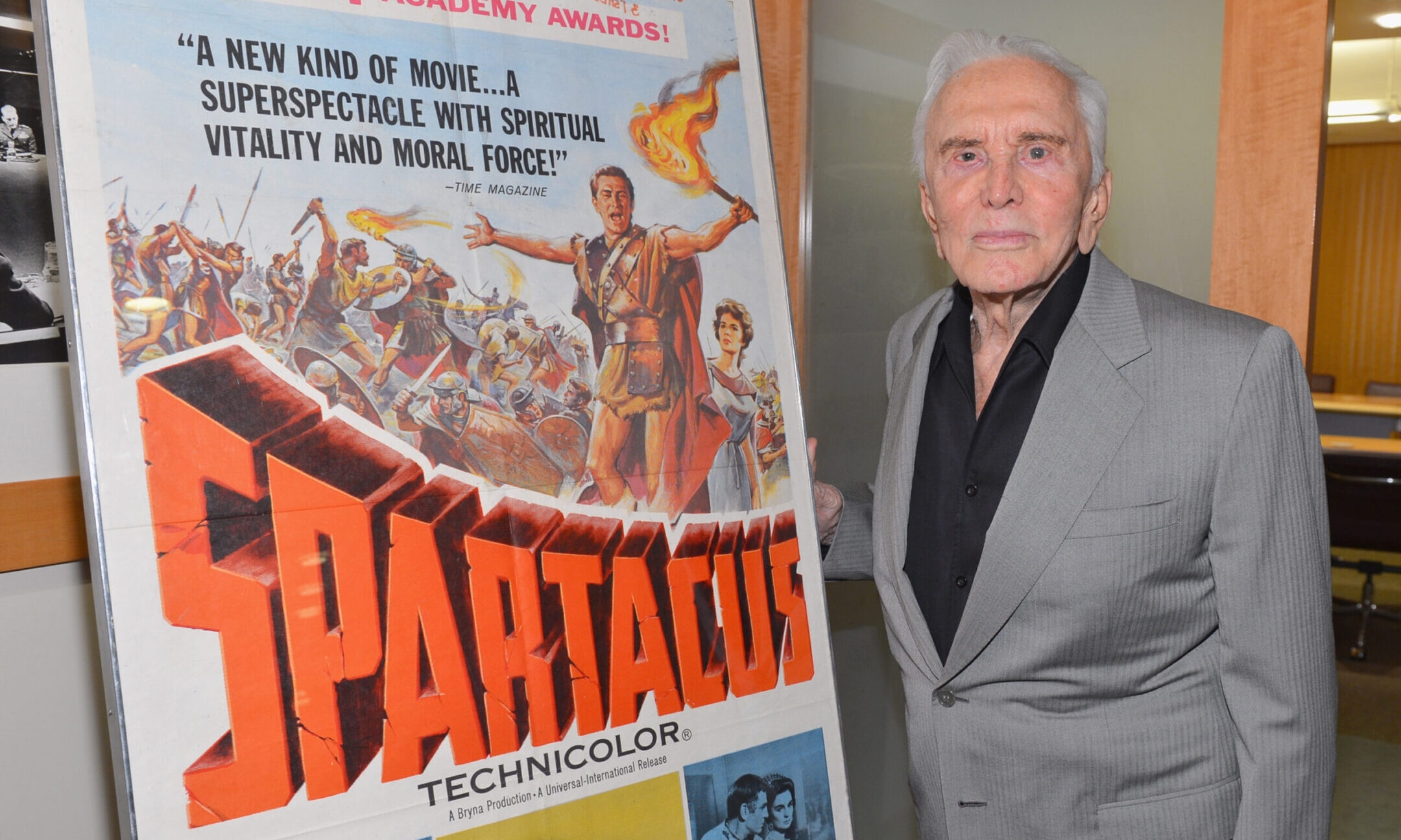
Jewish actor Kirk Douglas played a gladiator in 1960’s “Spartacus.” Douglas, who died in 2020 at 103, is seen here at a screening in 2012 in Beverly Hills, California. (Alberto E. Rodriguez/Getty Images)
Israeli academic Haggai Olshanetsky argued that the evidence for Jewish gladiators was “inconclusive” in a 2023 paper in the archaeological journal Atiqot.
“If there were such Jewish gladiators, they were very few,” he wrote, adding that if Jews were combatants in the games, they would have been more inclined to battle beasts than other men.
In the original “Gladiator” film, Crowe plays Maximus, a Roman general who is enslaved, made a gladiator, and rises to fame in the Roman Colosseum. Olshanetsky distinguishes between slaves and prisoners sentenced to death in the arena, and professional gladiators, who were well-funded athletes, similar to professional NFL players. (Today, football can be complicated for some Jews who view the game’s play as dangerous and akin to the senseless violence that the ancient rabbis prohibited.)
Hard evidence for Jews in the arena is “limited to those sentenced to death,” Olshanetsky wrote, mainly those sentenced after Jewish revolts against Roman rule. The Jews in these cases fought animals, or each other, to the death, he wrote, citing Josephus.
Schiffman pointed out that there were Jewish warriors who were captured by the Romans and brought to Rome as slaves, “so there could have been more trained warrior types” of Jews in the Eternal City.
For the Pompeii helmet, Olshanetsky argues the palm frond was linked to other cultures including the Phoenicians, Carthaginians and Christians, while the griffin was a pagan symbol, according to some Jews at the time. The palm frond was also a symbol of victory and is found on other artifacts, such as gladiator’s graves.
Besides the helmet, there are other suggestions of Jewish gladiators. A first-century book describes “a man of the Jewish race who was of greater stature than the tallest German” in a procession ahead of Roman games, but does not state unequivocally that the man was a gladiator.
Reish Lakish, a famous rabbi in Judea in the third century CE, may have been a gladiator before turning to Torah. The Babylonian Talmud says he sold himself to the “ludim,” a term some scholars have associated with gladiators, but Olshanetsky argues the translation is unclear, and that other mentions of Reish Lakish refer to him as a brigand before he became religious.
Spielman said graffiti that shows a “crude drawing of gladiators” from a tomb for Jewish man named Germanos, son of Isaac, in the catacombs of Beit She’arim, a Jewish archaeological site in today’s northern Israel, may suggest a Jewish gladiator was buried there, but the link is also inconclusive. He also noted that “the Colosseum itself was funded largely by the spoils from the Jewish Revolt.”
Olshanetsky argues the best evidence of a Jewish gladiator is the story of a Roman senator named Glabrio who lived in the first century CE. A text from more than a hundred years later says Glabrio and others were charged with atheism, “a charge on which many others who drifted into the Jewish ways were condemned.” Glabrio was sentenced to battle a lion as a gladiator and “dispatched the lion with the most accurate aim.” Olshanetsky says Glabrio likely practiced some aspects of Judaism, or converted, but says the account is made murky by the conversion and conflicting textual evidence.
Hidary said the Talmud discusses people selling themselves to become gladiators, and whether the community should raise money to rescue them. As with many debates preserved in the Talmud, the very discussion indicates that the question, at least, was real.
“They wanted to discourage people from doing it but if they did, they would end up raising money to get them out of there. But we do see this was one path that people took when they were pressed for money, they would become a gladiator,” he said.
Schiffman said the evidence was “scanty.”
“It wouldn’t surprise me if it turned out that there were some. But having said that, there is no evidence that there ever was one,” he said.
For the director of “Gladiator II,” no evidence to the contrary is justification enough to introduce characters and scenarios to the arena. Asked about whether the $200 million production was historically accurate, Scott reportedly said, “The short answer to that is, were you there?” Consider that an invitation to look for a Jewish gladiator in “Gladiator III” — which is already in the works.
JTA has documented Jewish history in real-time for over a century. Keep our journalism strong by joining us in supporting independent, award-winning reporting.
